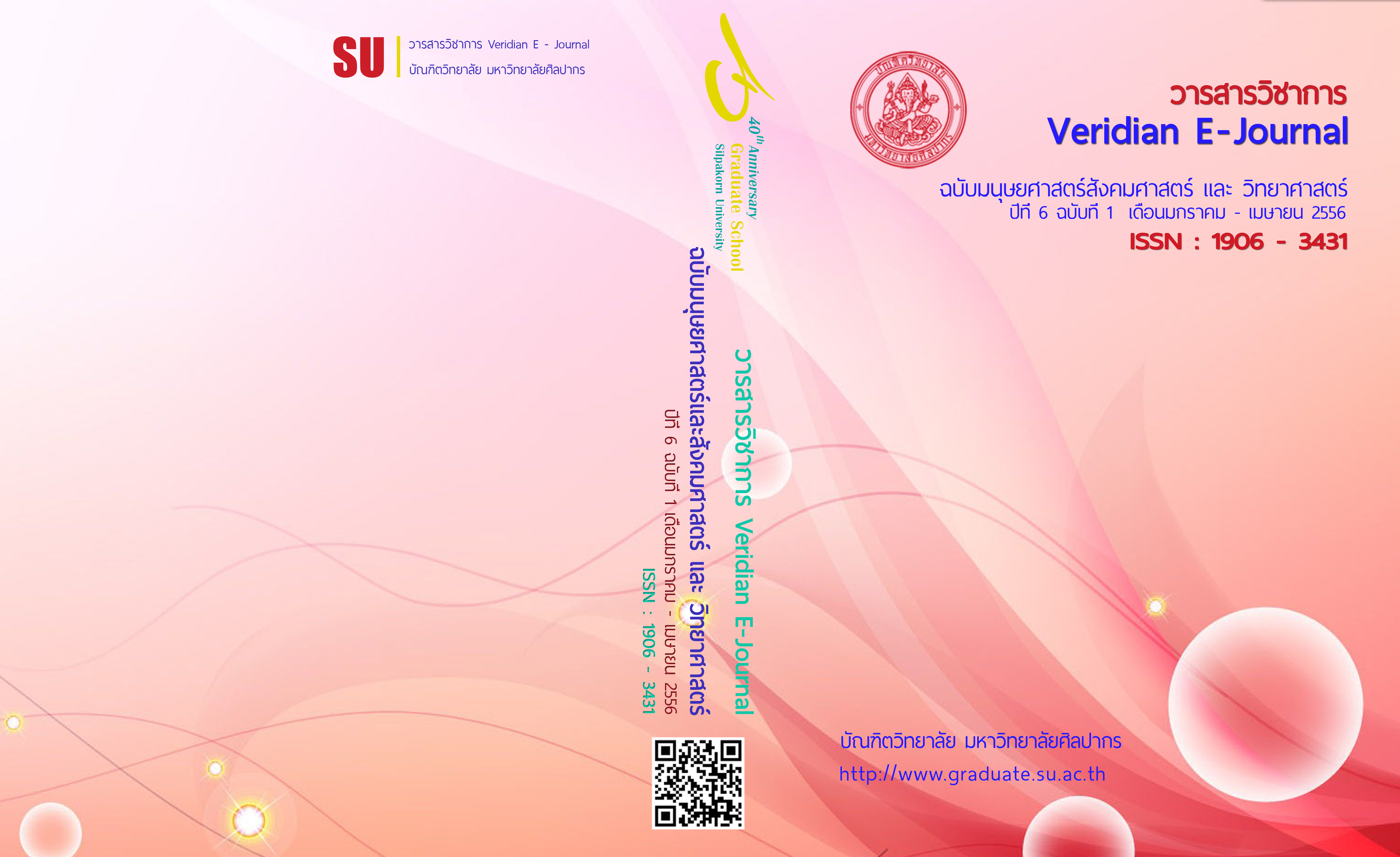การเปรียบเทียบพฤติกรรมการเป็นครูในศตวรรษที่ 21 เจตคติต่อวิชาชีพครู และแรงจูงใจใฝ่สัมฤทธิ์ของนิสิตนักศึกษาครูชั้นปีที่ 1 โดยใช้การฝึกอบรมเรื่องการเป็นครูในศตวรรษที่ 21 กับการสอนแบบบรรยาย
Main Article Content
บทคัดย่อ
บทคัดย่อ
การวิจัยครั้งนี้มีจุดมุ่งหมายเพื่อเปรียบเทียบพฤติกรรมการเป็นครูในศตวรรษที่ 21 เจตคติต่อวิชาชีพครู และแรงจูงใจใฝ่สัมฤทธิ์ของนิสิตนักศึกษาครูชั้นปีที่ 1 ระหว่างกลุ่มทดลอง ได้แก่ การฝึกอบรมเรื่องการเป็นครูในศตวรรษที่ 21 และการสอนแบบบรรยายกับกลุ่มควบคุม กลุ่มตัวอย่างที่ใช้ในการวิจัยครั้งนี้ เป็นนิสิตนักศึกษาครูชั้นปีที่ 1 คณะศึกษาศาสตร์ มหาวิทยาลัยนเรศวร จ.พิษณุโลก จำนวน 30 คน จากจำนวน 5 สาขาวิชา ได้แก่ สาขาวิชาคอมพิวเตอร์ศึกษา สาขาวิชาคณิตศาสตร์ สาขาวิชาฟิสิกส์ สาขาวิชาเคมี และสาขาวิชาชีววิทยา โดยกลุ่มตัวอย่างแต่ละคนจะถูกสุ่มเข้ากลุ่มจำนวน 3 กลุ่ม กลุ่มละ 10 คน แบบแผนการวิจัยเป็น completely randomized design โดยการวิเคราะห์ข้อมูลโดยใช้การวิเคราะห์ความแปรปรวนหลายตัวแปร (MANOVA) และการเปรียบเทียบรายคู่ ด้วยการใช้ Bonferroni
ผลการวิจัยพบว่า 1) รูปแบบการเรียนรู้เรื่องพฤติกรรมการเป็นครูในศตวรรษที่ 21 ใน 3 รูปแบบ ได้แก่ รูปแบบที่ 1 การฝึกอบรมเรื่องการเป็นครูในศตวรรษที่ 21 รูปแบบที่ 2 การสอนแบบบรรยายเรื่องการเป็นครูในศตวรรษที่ 21 และรูปแบบที่ 3 ไม่มีการจัดกระทำใดๆทั้งสิ้น ส่งผลต่อพฤติกรรมการเป็นครูในศตวรรษที่ 21 เจตคติต่อวิชาชีพครู และแรงจูงใจใฝ่สัมฤทธิ์ของนิสิตนักศึกษาครู ชั้นปีที่ 1 แตกต่างกัน 2) นิสิตนักศึกษาครูชั้นปีที่ 1 ที่ได้รับการฝึกอบรมเรื่องการเป็นครูในศตวรรษที่ 21 มีคะแนนพฤติกรรมการเป็นครูในศตวรรษที่ 21 เจตคติต่อวิชาชีพครู และแรงจูงใจใฝ่สัมฤทธิ์สูงกว่านิสิตนักศึกษาครูชั้นปีที่ 1 ที่ได้รับการสอนแบบบรรยายและไม่ได้รับการจัดกระทำใดๆเลย
Abstract
This study aimed to compare first-year student teacher’s being a 21st century teacher behavior, attitude toward teaching profession, and achievement motivation in being a 21st century teacher training and lecture that were the experimental groups and the control group. The sample consisted of 30 first-year student teachers in faculty of Education, Naresuan University from 5 major subjects: Computer education, Mathematics, Physics, Chemistry, and Biology. Each was randomized to two experimental groups: one group learned being a 21st century teacher training and one learned lecture, and one control group. There were 10 samples in each group. In this completely randomized design of experiment, the statistics used for Multiple Analysis of Variance (MANOVA) and using Bonferroni test for pairwise comparisons.
The results of the study were found that: 1) Using being a 21st century teacher training, lecture, and control group in first-year student teachers had different being a 21st century teacher behavior, different attitude toward teaching profession, and different achievement motivation at the 0.05 level of significance. 2) the first-year student teachers, who received being a 21st century teacher training, had higher scores in being a 21st century teacher behavior, attitude toward teaching profession, and achievement motivation than the the first-year student teachers, who received lecture and control group, at 0.05 level of significant.

